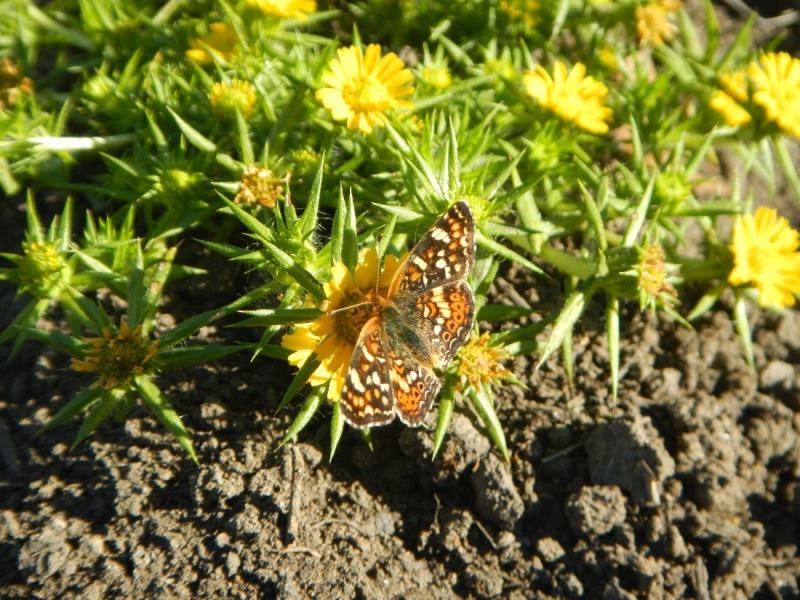Recently, Midpen rangeland ecologist and botanist Lewis Reed stumbled across a tarweed at Tunitas Creek Open Space Preserve that he did not recognize, a find that would lead him to discover not one, but three locally rare native plants. There are over 30 plants classified as tarweeds, so it can be easy to overlook these common flowers. Upon closer inspection, however, there is an incredible diversity of form in these beautiful plants.

After consulting a plant identification book and some microscope work, Reed concluded that the plant was a clustered tarweed (Deinandra fasciculata), a species that has not been recorded in the area since the 1800s and has never been documented in San Mateo County. These yellow-flowered plants bloom from August through October, providing crucial floral resources for pollinating insects in the heat of late summer and early fall, when many other flowering plants are done blooming.

Inspired by this first discovery, Reed took a closer look at other tarweeds he had come across but never stopped to identify. This led to the identification of a hayfield tarweed subspecies (Hemizonia congesta ssp. lutescens), which seems common in our area but has never been officially documented.

A spiky tarplant growing in a dry livestock pond at La Honda Creek Open Space Preserve also caught Reed’s eye. The plant was thriving in a unique environment that is inhospitable to many other species due to its cyclical winter flooding and summer drying. Reed identified the plant as pappose tarplant (Centromadia parryi ssp. parryi), a rare plant at the state level.
Tarplants earn their name from the aromatic resins they produce that help protect them from being eaten by wildlife and livestock alike. All three of these tarplants were found on portions of coastal Midpen preserves that are part of our conservation grazing program.
“Within the grassland community, native plants like these tend to benefit from conservation grazing. These small-seeded wildflowers are not particularly competitive with the more pervasive, nonnative annual grasses that dominate local grasslands today,” Reed said. “Conservation grazing can help moderate that competition, and the fact that these three species have their own defenses against herbivory also helps ensure their success.”
Coastal grasslands are one of the most biodiverse and threatened ecosystems in North America. They can benefit from periodic disturbances to prevent the loss of their native biodiversity to introduced species, shrubs and forest. These disturbances, that today are provided in part by conservation grazing with cattle, were historically provided by grazing wildlife herds no longer present on the landscape, natural fires and Native American burning practices.
“One of the things that’s so special about living and working in our area is this incredibly rich and unique biodiversity, and that means that there are still discoveries to be made. This work is critical to protecting the unique biological heritage of our region.”
You can contribute to our understanding of the plants and wildlife in Midpen preserves by sharing your observations to Midpen’s Biodiversity Index Project using the iNaturalist app.
This article was originally published in the Winter Views 2023 newsletter under, New Discoveries in Coastal Preserves: Plants Not Seen in Over a Century Found in Grazed Areas.

